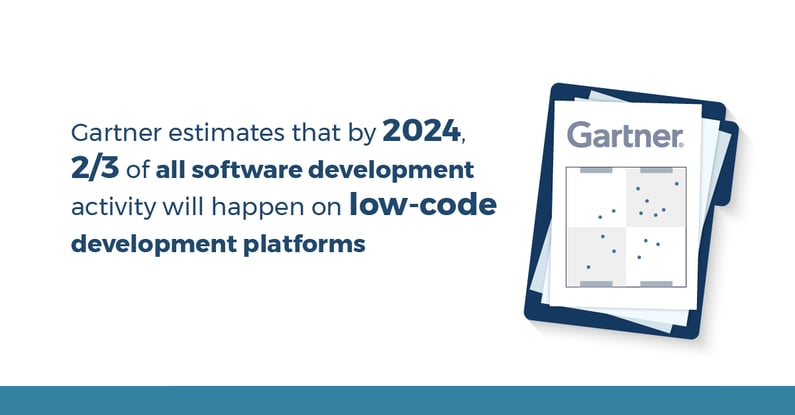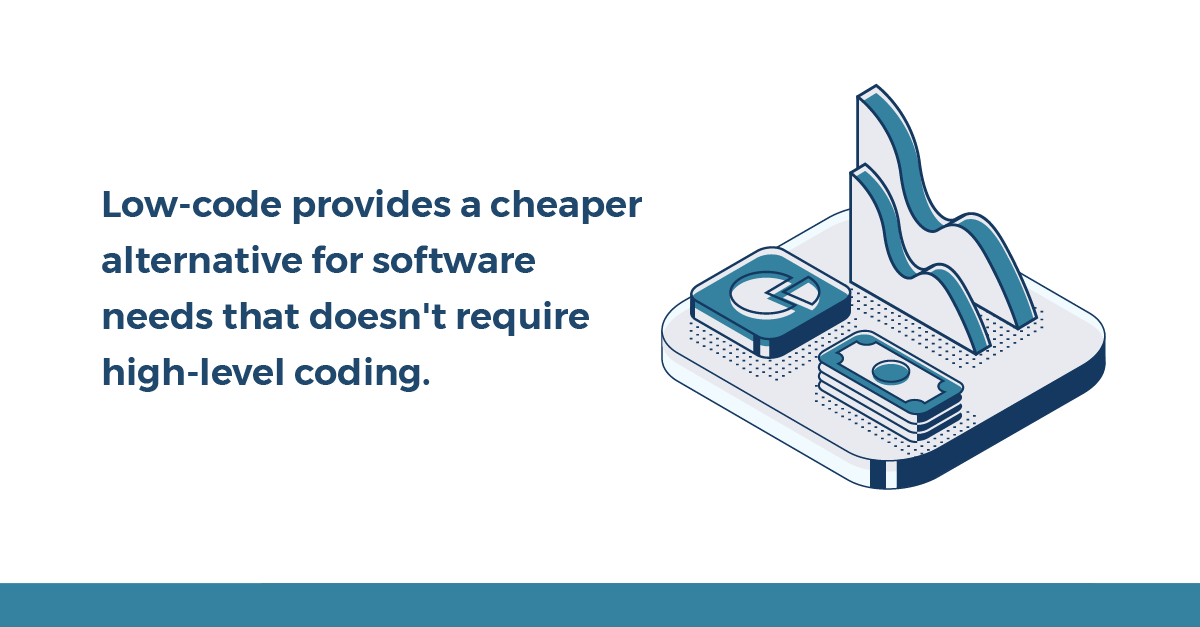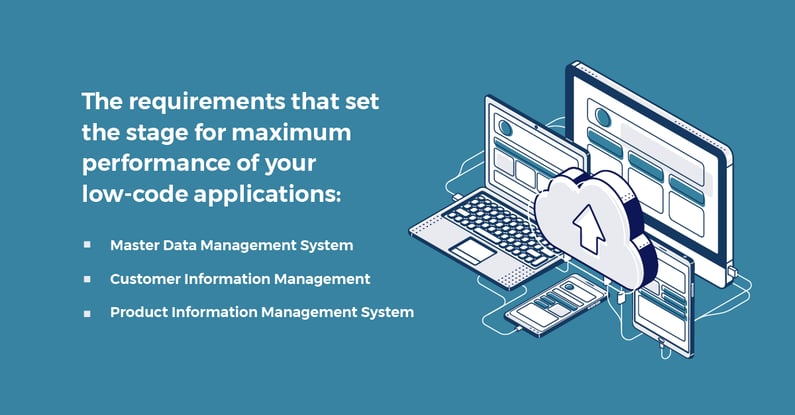Gartner estimates that by 2024, two-thirds of all software development activity will happen on low-code development platforms.
This means that low-code is not only the future of software development but will also play a role in product development and customer experience as we advance. This, here, is the next frontier of competitive advantage.
Is your business ready for this digital transformation?

What is Low-code Development in the First Place?
Low–code app development is an agile software development process that utilizes little or no code.
In this case, developers use form or app builders to develop code, hence bypassing the entire coding process that often becomes expensive. These app builders are more intuitive. They leverage visual, graphic, and drag and drop interfaces to abstract software development and coding. Low-code offers a lot of things, including:
- Agility (one-step deployment)
- Another layer of abstraction
- Shorter software development life cycles (SDLC)
- Improvement to end-user platforms
- Developer empowerment

Why You Should Get on the Low-code Train
Since custom coding has always been a struggle (costly, takes ages, complex), businesses have primarily outsourced their coding to third-party apps and high-level software developers.
That's probably why your tech stack runs on dozens of siloed software and the promise of delicate integrations.
Small and medium companies that resorted to custom software development with coding to launch apps always had to deal with:
- Long and seemingly endless software development life cycles (SDLC)
- High costs
- Low scalability
- Non-availability of unique CX applications
Subsequently, bespoke software development has always been a reserve for large companies with endless budgets. Not for long; low-code software development is here to change this.
Low-code provides a cheaper alternative for software needs that doesn't require high-level coding. With low-code, your business can also get the customization and level of control it desires and fast-track the building of custom apps that improve your customer experience.
The Numbers Behind the Hype
You've probably been hearing about low-code in software development cycles. These are the statistics fueling the hype on this "new normal" of software development:
- About 71% of businesses build a web app with citizen development within a year
- 82% of firms believe that custom software development outside of IT is essential
- AI technology and expertise are expensive for 40% of companies
- Low-code solutions have the potential of reducing software development time by 90%
Low Code Requirements for Your Business
Now that you've seen how low-code impacts your bottom-line, it's now crucial to know what your business needs to embrace with this new technological paradigm.
Contrary to popular belief, embracing low-code transformation is easier than it may sound. Technical terms like low-code only shield a simple and straightforward process.
A Deep Desire to Transform
All progress takes place outside the comfort zone. Though many executives know about the low-code revolution, very few are willing to act on it. Reading, thinking, and considering low-code systems is not enough in many cases.
You have to go the extra mile, take that leap of faith, and start somewhere in your low-code transformation journey.
Is it the lack of control, personalization, and customization? Or the tragedy of having a great idea that can improve your CX but not finding software on the market to bring it to life?
Whatever the reason, your will and desire to take your business to the next level is your greatest tool in transforming with low-code. This is the desire to unshackle yourself from third-party subscriptions and payments.
The most important thing is to start somewhere.

Technical Requirements
These requirements are the financial and organizational conditions that go a long way in making your low-code strategy feasible.
They vary in size and magnitude from organization to organization, but are almost always a constant in low-code success stories. They include:
Adequate Funding and Support
Low-code systems can be relatively cheaper, but that doesn't mean they're free. Developing on low-code platforms and their infrastructure comes with significant costs.
This includes building infrastructure, empowering teams, supporting software, and the cost of using supportive company systems such as app hosting.
A Plan or a Strategy
Most of the hiccups many companies face are often not due to low–code shortcomings but due to the lack of a plan.
Ensure to draw an effective plan that will pick up on the sectors that require low-code automation, while considering scalability, in addition to future and current integrations.
Human Resources / Support
Most low-code operations may require a small team of qualified programmers or people in related careers. Moreover, it also requires support from third-party vendors who offer hosting, master data management (MDM), and product information management (PIM).

Performance Requirements
These are requirements that set the stage for maximum performance of your low-code applications. They are the keys to harnessing all the benefits of a low-code system. To move to low-code, you require:
An Efficient Master Data Management System
By embracing a low-code system, you're committing to data management. All the data that was managed by third-party or outsourced applications is now yours to manage.
An efficient MDM system is crucial. eSystems' services can help you gain control and manage data access, authorization, and synchronization across various systems, which is necessary for quality low-code app development.
This ensures a smooth flow of data and heightens data security, which is a key concern during low-code and agile system development.
Efficient Customer Information Management
Many companies opt for low-code software development with customer experience in mind. These low-code systems often seek to automate and streamline end-user and customer touchpoints.
A well-managed central point for customer interactions is essential if your low-code systems seek to address customer experience. Also, safe storage of customer data is vital for both compliance and brand image.
However, you don't need to stress about customer data management. Low-code providers such as eSystems offer this in their long range of services.
An Efficient Product Information Management System
Running custom low-code applications is easy when a company offers one product. Running low-code business applications across different products is another issue altogether.
A company requires a product management system beforehand to streamline product data flow between its low-code applications and different products.
This single point of truth goes a long way in ensuring efficient data access, authorization, and management that outsourcing and third-party systems handled before.
Don't have a PIM? Well, no need to worry. Low-code experts such as eSystems offer information management systems that cover product information. Click here to find out what we can achieve together.
Where to Go From Here
Want to take the leap and delve into low-code development, but don't yet have everything in place mentioned here? We at eSystems can help you get there and also achieve the low-code applications which you need the most -and fast. Contact us today to get started on your digital transformation journey.

WRITTEN BY: Reggie Rusan | Chief Technology Officer



COMMENTS